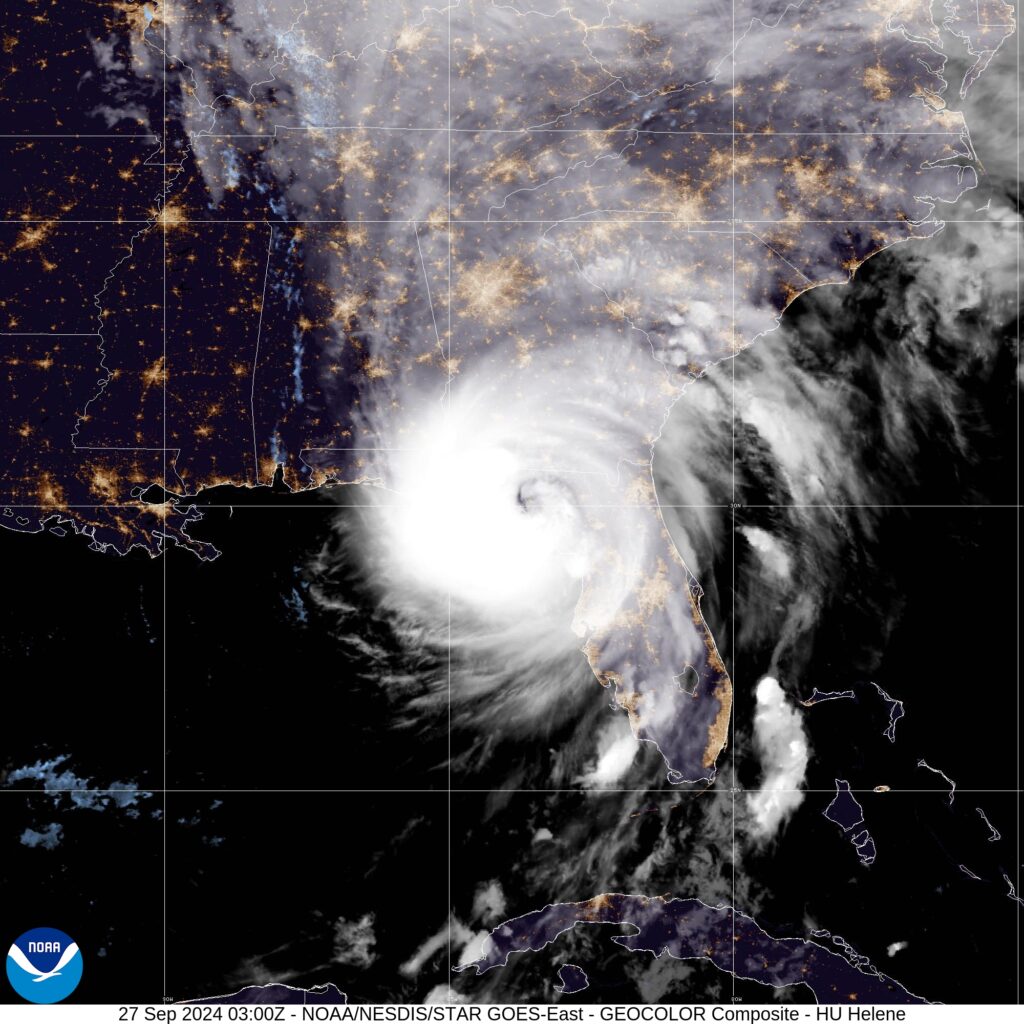By Bella Kubach, Citizens’ Climate Lobby
It’s a turbulent time for weather forecasting with over 2,000 meteorologists unsure of whether they will return to jobs with the National Weather Service (NWS) after being caught in political crosshairs.
Last month, President Donald Trump’s administration instituted widespread layoffs across several federal agencies, including dozens of weather forecasters and scientists who work for the National Oceanic and Atmospheric Administration (NOAA), the operating unit that oversees the NWS.
While a federal judge has ruled that some NOAA workers should be reinstated, many of the experts who crunch the data that translates into life-saving weather alerts are now in limbo as Floridians count down the days to hurricane season. This uncertainty raises serious concerns, as key NOAA facilities – such as its Storm Prediction Center and climate observatory – could see their work terminated or dramatically cut back.

NOAA, a federal agency, is responsible for daily weather forecasts, severe storm warnings and climate monitoring.
As a Florida resident, I am acutely familiar of our state’s unpredictable weather patterns: One minute it’s 75 and sunny, the next it’s torrentially raining – sometimes at the same time. But our one consistency is being privy to ample warnings of major weather events so we can prepare accordingly.
This became especially clear last year when hurricanes Milton and Helene – and the tornadoes they triggered – left disastrous damage to our state. Florida cities are still reeling from billions of dollars in infrastructure damage, but we would have fared much worse if not for the constant weather alerts we received from the NWS.
The team of climate scientists at the NWS are arguably the unsung heroes of our time as global warming ramps up and weather patterns grow more extreme. They are on the frontlines of keeping the general public safe. Just months ago, alerts from Florida’s NWS undoubtedly saved lives and spurred many into action as unexpected tornadoes formed in the outer bands of Hurricane Milton.
As a resident of Boca Raton, I was shocked to learn tornadoes blew through my neighboring cities, affecting those living in Palm Beach County, from Wellington to Jupiter. The twisters uprooted trees, flipped cars, and collapsed roofs. With estimated peak winds of 140 mph, it formed a treacherous 21-mile-long path.
Thankfully, there were no deaths. Unfortunately seven were injured in its wake, but it could have been so much worse. We can thank the frequent tornado warnings pinging to our phones and urging us to seek cover, for being able to stay one step ahead of the danger.
Early predictions from the European Centre for Medium Range Weather warn that 12 named storms and five hurricanes are likely this upcoming hurricane season.
It’s no secret climate change is worsening hurricane impacts in the United States. And the intensity of storms will likely increase as global temperatures rise year after year. A warmer atmosphere holds more precipitation, making conditions more favorable for weather extremes.
We can thank NOAA and the NWS for protecting our communities as weather events worsen. Without advanced preparation, hurricanes can be lethal. Florida saw its deadliest hurricane in Lake Okeechobee in 1928, far before NOAA’s advanced technology and predictions were in place. Back then, there were 2,500 fatalities, with the hurricane hitting underprepared communities the hardest.

However, in the nearly 100 years since this tragedy, NOAA has advanced its predictions and forecasts and has made enormous strides to prevent this kind of destruction today.
With NOAA’s future uncertain, it raises the questions: Are we willing to go back? At what point does the new administration’s plan to “maximize government efficiency” sacrifice the lives of the U.S. people? NOAA workers save lives and Floridians especially must understand the risk of these layoffs.
Sen. Rick Scott worked hard for the 2024 passage of the Federal Disaster Tax Relief Act to ensure disaster relief for communities in Florida, so there’s no question on whether he and fellow Sen. Ashley Moody understand the severity of these storms.
As hurricanes intensify and the risk to Floridians lives and livelihood continue to grow, it’s in their hands to protect NOAA and the experts who keep us safe.
Bella Kubach is a communications intern for Citizens’ Climate Lobby, a nonprofit, grassroots climate advocacy organization, and is currently studying for a master of arts in global sustainability at the University of South Florida. Banner photo: A home near Stuart decimated by a tornadoe spawned by Hurricane Milton as the storm progressed across Florida (U.S. Air National Guard photo by Tech Sgt. Chelsea Smith, via Defense Visual Information Distribution Service) .
Sign up for The Invading Sea newsletter by visiting here. To support The Invading Sea, click here to make a donation. If you are interested in submitting an opinion piece to The Invading Sea, email Editor Nathan Crabbe at nc*****@*au.edu.



